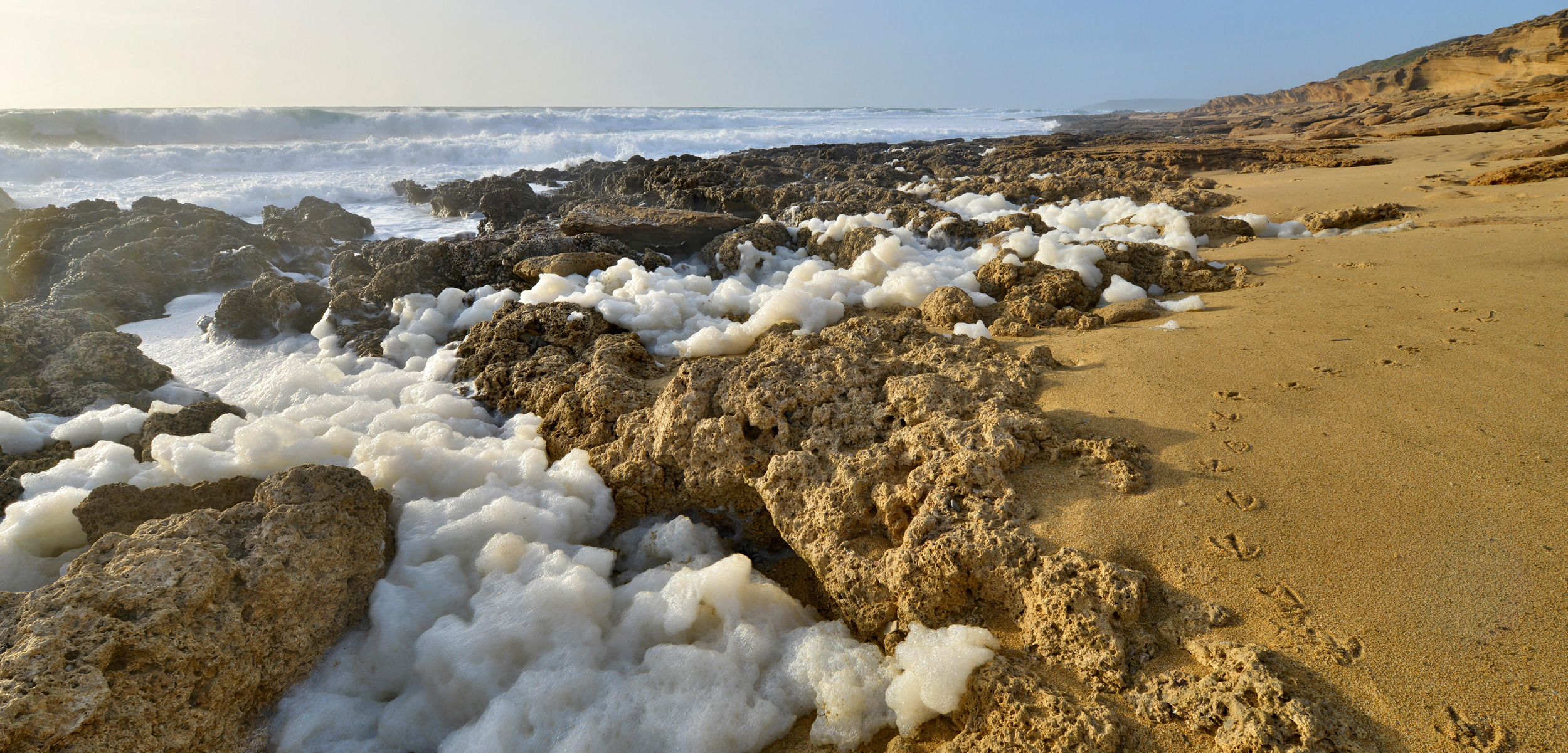Living in a Bubble
These five organisms find home in sea foam.
Article body copy
Sea foam floating on the ocean or piled knee-high on the beach may look like gunk dumped from a chemical plant, but bubbles aren’t necessarily bad. Naturally produced foams are usually a sign of a healthy ocean and are home to a diverse community of microbes and small animals, many of which depend on the masses of bubbles to survive and reproduce. For all these creatures, it’s simple: no foam, no life.
Whipped Algae
When the Sun is out and nutrients are plentiful, microscopic algae, such as diatoms and dinoflagellates, can reproduce rapidly, forming massive blooms of cells that release detergent-like compounds (called surfactants) as they grow and die. Waves whip air into the surfactant-laden water, churning it into foam. Onshore winds can then fill beaches with piles of the algae-filled spume.
The dinoflagellate Karenia brevis occasionally turns parts of the Gulf of Mexico red or brown with its blooms, lacing the water with harmful toxins. When sea foam washes up on beaches and disintegrates, these toxins can become airborne and breathed in by people, aggravating asthma or causing cold-like respiratory symptoms.
Fungus-Filled Froth
Where there’s wet wood, there’s a meal for fungi. A few fungus species dine on driftwood and attach microscopic cannonball-like structures to sand grains or bits of shell as they grow within the sand. Spores released from these balls are carried out to sea, where they become trapped in bubbles and eventually surf back to shore, concentrated within sea foam. If a gob of foam dissolves upon a piece of driftwood, the spores sprout, and the cycle continues.
These and the many other fungal residents of sea foam are potential sources of new drugs. Some produce compounds capable of disrupting the growth of disease-causing bacteria and cancerous cells.
Bacteria in Them Bubbles
Slide any old sea foam under a microscope and you’ll likely find bacteria. Many are adept at dining on whatever dead organisms happen their way, be they drowned insects or decomposing seaweeds. Other bacteria look to humans and industry as sources of food. Some foams formed near petroleum refineries, for instance, contain bacteria able to survive on crude oil. And sea foams on recreational beaches can be home to infectious bacteria from sewage.
Bacteria reach higher concentrations in foam than in water or sand, so if you’re unsure about a beach’s cleanliness, it’s probably best to avoid close encounters of a bubbly kind.
Sex in the Sea Foam
For the sea squirt Pyura praeputialis, a tubular filter feeder from the coasts of Australia and Chile, foam means babies. Adults, anchored permanently to the water’s edge, release foam-making compounds, along with their eggs and sperm, into the sea around them. The resulting froth keeps the gametes close to one another, increasing the chance that sperm meets egg. The sea squirt’s strategy may also help keep the family together, since the foam likely holds the developing larvae near the shore, allowing them to attach to the seashore near their parents instead of being swept out to sea.
Shelter on the High Seas
Out on the open ocean, a clump of foam can mean the difference between life and death. Sea skaters (Halobates sp.), one of the few insects that live in the ocean, zip across the sea surface snacking on zooplankton and any insects that happen to fall into the water. Sea foam whipped up by ocean currents provides a hideout when hungry seabirds such as the blue-gray noddy, the gray-backed tern, and the white-faced storm petrel are about. Sea skaters can’t fly or dive into the water, so foam is essential to their survival.

